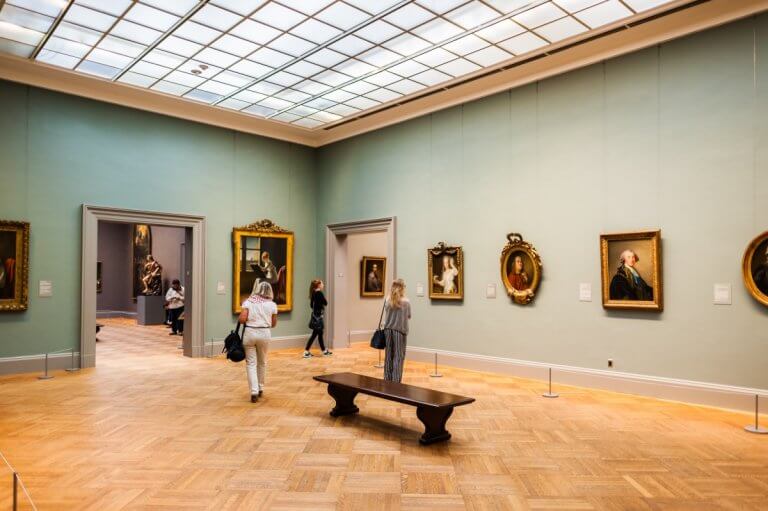
“What are the legal options for prosecuting individuals involved in intentional cultural heritage destruction? Could we convene an international tribunal to try individuals for their actions as the Allies did after World War II? What other options exist?” – Stephen K. Urice, Professor of Law and Director, Arts Law Track – Graduate Program in Entertainment, Arts and Sports Law, University of Miami, School of Law
Not many people would pair the terms ‘art’ and ‘law’ together. Since art embodies the concept of visual creativity unbound by rules and objectivity, and law is a structured statute system enforced by social or governmental institutions, it’s unsurprising that the words seem innately contradictory.
But art law embodies the legal concepts of creation, ownership and transaction in varying forms of art. As NYC art consultant, Lauren P. Della Monica, explains, “Arts law is an amalgam of contracts law, trusts and estates law, litigation and statutory law at different levels.”
Prospective law school applicants are growing increasingly curious toward the art law field. With disputes between official guilds and art moguls gaining weight and global media attention, this contemporary discipline continues to capture and intrigue the public eye.

Last year’s Tefaf art market report valued international art auction and private sales in 2016 at US$45billion, up 1.7 percent from the previous year. And with law consistently standing among the highest-paying professions, it’s easy to see why art law is considered a niche and lucrative field.
“The factors that drove life back into the art market last year should continue to sustain prices into 2018, and induce collectors to sell treasured works despite bumps in the road created by volatile stock markets…,” writes Abby Schultz of Penta.
“Global wealth generated by strengthening economies in China and the Eurozone as well as the US, helped fuel a booming art market in 2017, leading to a 25% gain in auction sales and eye-popping prices,” she adds, “most notably the $450.3 million price paid for Leonardo da Vinci’s Salvator Mundi, reportedly by Saudi Crown Prince Mohammed bin Salman.”
For those interested in this legal pursuit, note that the University of Miami’s (UM) School of Law is a known leader of the art law field. The school is located in Coral Gables, a sensational study backdrop set southwest of downtown Miami – a region that’s fast becoming known as the city’s next big arts destination.

Innovative in its offering of arts-based legal programs, UM School of Law provides an unrivalled foundation in the discipline. This year, for example, students can take part in a three-credit course on International Cultural Heritage, offered in conjunction with the Art Law Centre, University of Geneva. The course is delivered in English and remains open to all students from UM Law and other ABA-accredited schools.
The program introduces students to the issues surrounding international cultural property and art law, including the trade of cultural goods; the restitution of stolen/looted art and antiquities; the protection of cultural property and built heritage from natural and human-induced disasters, and more. It also delves deeply into the intricate relationship between public and private global law, human rights law, intellectual property law, and alternative dispute resolution.
 Among other powerful art law figures, course instruction is provided by Stephen K. Urice, an influential, global powerhouse on cultural heritage law and policy at University of Miami School of Law. As co-author of the standard art law casebook, Law, Ethics and the Visual Arts – and long-serving member of faculty for Legal Issues in Museum Administration – here, you’ll learn the ins and outs of the business from the industry’s best.
Among other powerful art law figures, course instruction is provided by Stephen K. Urice, an influential, global powerhouse on cultural heritage law and policy at University of Miami School of Law. As co-author of the standard art law casebook, Law, Ethics and the Visual Arts – and long-serving member of faculty for Legal Issues in Museum Administration – here, you’ll learn the ins and outs of the business from the industry’s best.
The school also offers a sought-after LL.M. in Entertainment, Arts and Sports Law. Described as an all-encompassing preparation and focused track of study, this is another unrivalled, highly-specialized opportunity for students interested in all things art and law.
Exclusive to the UM School of Law, students here home in on three direct legal areas that are interconnected and expanding. Learning is hands-on and industry-informed, teaching participants how to negotiate and draft transactional agreements within entertainment, the arts and sports.

The arts track of this respected LL.M. grants a valuable advantage when it comes to breaking into a notoriously competitive field. The integrated structure of this cutting-edge course means the program can be tailored to personal goals, maximizing outcomes for ambitious legal learners while significantly enhancing prospects in life post-graduation.
And in terms of Miami as a global study destination, there’s no better place to get to grips with the arts from a legal perspective. Known as a haven for the avid art-lover – equipped with stirring galleries that range from large to small – it won’t take long for UM to make you a reputable lawyer of the arts.
“Nestled into one of South Florida’s loveliest locales – the lush, elegant enclave of Coral Gables – Miami Law vividly reflects the one-of-a-kind metro area it calls home,” says Patricia D. White, Dean of the School.
“Our educational environment offers a broad variety of opportunities for clinics and clerkships in Miami’s fascinating corridors of power and fast-paced corporate scene, as well as myriad opportunities for practical learning and community-service experiences.
“And our profoundly global perspective provides the perfect springboard for a successful career in a profession that becomes more international every day.”
Follow Miami School of Law on Facebook, Twitter, YouTube, Flickr, Instagram and LinkedIn
Liked this? Then you’ll love these…
Benefits of studying a US LL.M.
Law at Miami: Education, culture, lifestyle and opportunity in abundance







